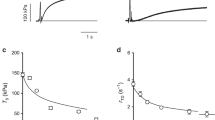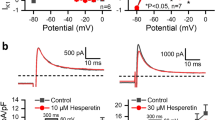Abstract
Cardiac glycosides such as digoxin or ouabain have long been known to influence the strength of contraction of cardiac muscle1–3. Although the mechanism of action of these compounds remains unknown4,5, all the proposed modes of action are based on initial binding to specific membrane receptors which are part of the (Na+ + K+) ATPase complex. These receptors, well characterized and defined6–8, suggest the existence of an endogenous substance capable of binding to them, in analogy with endogenous opiates, discovered long after morphine and its receptors9. As glycosides affect (Na+ + K+)ATPase activity, an endogenous substance may be a regulator of this important enzyme. Indeed, the search for endogenous regulators of the (Na+ + K+)ATPase or ouabain-like compounds (OLC) has recently intensified. These compounds, extracted and partially purified from mammalian brain10–14, heart15, blood16–19 and urine20,21, and from toad skin and plasma22,23, have been shown to inhibit 3H-ouabain binding and (Na+ + K+)ATPase activity. We report here that in addition to these effects, the OLC, highly purified from toad skin and sheep brain, increases the force of contraction of frog and guinea pig atrium.
This is a preview of subscription content, access via your institution
Access options
Subscribe to this journal
Receive 51 print issues and online access
$199.00 per year
only $3.90 per issue
Buy this article
- Purchase on Springer Link
- Instant access to full article PDF
Prices may be subject to local taxes which are calculated during checkout
Similar content being viewed by others
References
Cattel, M. & Gold, H. J. Pharmac. exp. Ther. 62, 116–125 (1938).
Cotten, M. & Stopp, P. E. Am. J. Physiol. 192, 114–120 (1958).
Langer, G. A. & Serena, D. A. J. molec. cell. Cardiol. 1, 65–70 (1970).
Lee, K. S. & Klaus, W. Pharmec. Rev. 23, 194–250 (1971).
Noble, D. Cardiovasc. Res. 14, 495–514 (1980).
Baker, P. F. & Willis, J. P. J. Physiol., Lond. 224, 441–462 (1972).
Akera, T. & Brody, T. M. Pharmac. Rev. 29, 187–220 (1978).
Wallick, E. T., Lane, L. K. & Scwartz, A. A. Rev. Physiol. 41, 397–411 (1979).
Hughes, J. et al. Nature 258, 577–579 (1975).
Haupert, G. T. Jr & Sancho, J. M. Proc. natn. Acad. Sci. U.S.A. 76, 4658–4660 (1979).
Fishman, M. Proc. natn. Acad. Sci. U.S.A. 76, 4661–4663 (1979).
Lichtstein, D. & Samuelov, S. Biochem. biophys. Res. Commun. 96, 1518–1523 (1980).
Lichtstein, D. & Samuelov, S. Proc. natn. Acad. Sci. U.S.A. 79, 1453–1456 (1982).
Schwartz, A. et al. Ann. N. Y. Acad. Sci. 402, 253–271 (1982).
De Pover, A., Castaneda-Hernandez, G. O. & Godfraind, T. Biochem. Pharmac. 31, 267–271 (1982).
Poston, L. et al. Br. med. J. 232, 847–379 (1981).
Hamlyn, J. M. et al. Nature 300, 650–652 (1982).
Gruber, K. A., Whiteker, J. M. & Buckalew, V. M. Nature 287, 743–745 (1980).
Cloix, J. F., Miller, E. D., Pernollet, M. G., Devynck, M. A. & Meyer, P. C. r. hebd. Séanc. Acad. Sci., Paris 296, 213–216 (1983).
de Wardener, H. E. & Clarkson, E. M. Clin. Sci. 63, 415–420 (1982).
Clarkson, E. M., Raw, S. M. & de Wardener, H. E. Kidney Int. 16, 710–421 (1979).
Flier, J. S., Maratos-Flier, E., Pallotta, J. A. & McIsaac, D. Nature 279, 341–343 (1979).
Flier, J. S., Edwards, M. W., Daly, J. J. & Myers, C. W. Science 208, 503–505 (1980).
Hart, G., Noble, D. & Shimoni, Y. J. Physiol., Lond. 334, 103–131 (1982).
Deslauriers, Y., Ruiz-Ceretti, E., Schanne, O. F. & Payet, M. D. Can. J. Physiol. Pharmac. 60, 1153–1159 (1982).
Tanz, R. J. Pharmac. exp. Ther. 144, 205–213 (1964).
Seifen, E. Br. J. Pharmac. 51, 481–490 (1974).
Koch-Weser, J. Circulation Res. 28, 109–118 (1971).
Niedergerke, R. & Page, S. Proc. R. Soc. B213, 325–344 (1981).
Hordof, A. J., Rose, E., Danilo, P. & Rosen, M. R. Am. J. Physiol. 242, H677–H682 (1982).
Meyer, K. & Linde, H. in Venomous Animals and their Venoms Vol. 2 (eds Bucherl, W. & Buckley, E.) 521–552 (Academic, London, 1971).
Author information
Authors and Affiliations
Rights and permissions
About this article
Cite this article
Shimoni, Y., Gotsman, M., Deutsch, J. et al. Endogenous ouabain-like compound increases heart muscle contractility. Nature 307, 369–371 (1984). https://doi.org/10.1038/307369a0
Received:
Accepted:
Issue Date:
DOI: https://doi.org/10.1038/307369a0
This article is cited by
-
Simultaneous measurement of excitation-contraction coupling parameters identifies mechanisms underlying contractile responses of hiPSC-derived cardiomyocytes
Nature Communications (2019)
-
In search of synaptosomal Na+, K+-ATPase regulators
Molecular Neurobiology (1992)
-
Different properties of two brain extracts separated in sephadex G-50 that modify synaptosomal ATPase activities
Neurochemical Research (1988)
-
Endogenous digitalis–like factors in hypertension and chronic renal insufficiency
Kidney International (1986)
-
Sodium pump: Birthday present for digitalis
Nature (1985)
Comments
By submitting a comment you agree to abide by our Terms and Community Guidelines. If you find something abusive or that does not comply with our terms or guidelines please flag it as inappropriate.



